
Barkhamsted Historic Landmarks
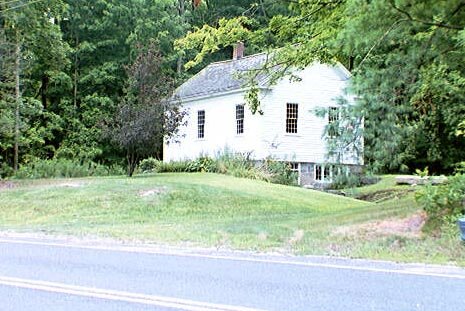
The Barkhamsted Center Schoolhouse is now located on Center Hill Road (Route 181) very near the geographic center of the town. In 1979 the Historical Society moved it to this site from the original location on what is now the banks of the Barkhamsted Reservoir in an area not open to the public. During most of the 1800s and into the first couple of decades of the 1900s the town was split up into a dozen or more school districts. This building was the schoolhouse for District One- the Center District. Completed in 1824, the building was originally two stories high to accommodate the large number of students at that time. As the population of the town declined with westward migration, and with the building badly in need of repair, it was decided to convert it to a single story structure in 1880. What you see now was previously the second floor!
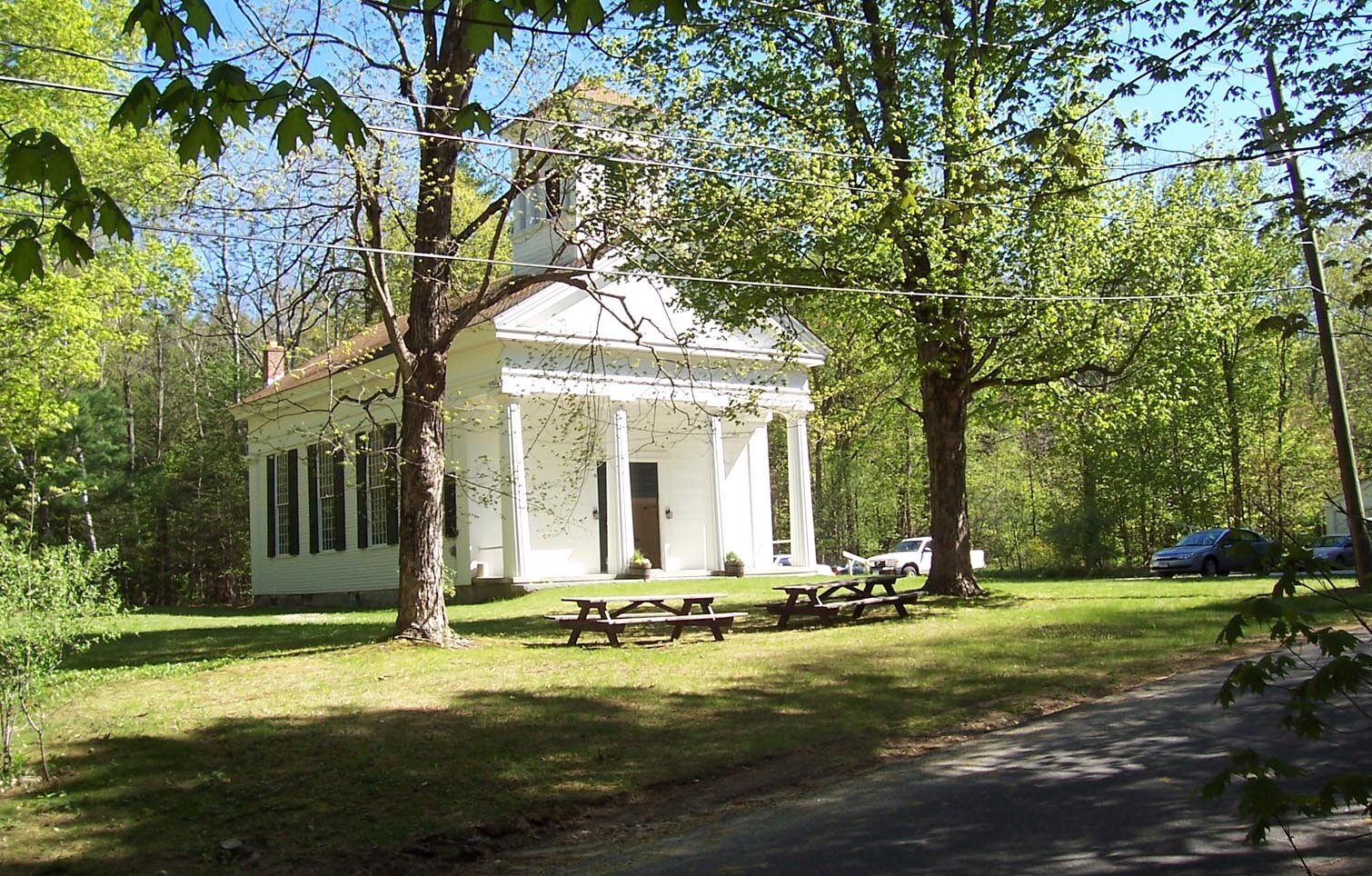
The First Congregational Church of Barkhamsted, also known as the Center Church. Completed in 1845, this church was built to replace the original meeting house, although the decision to put up a new structure was bitterly fought by a portion of the congregation. On September 10, 1879 the town's 100 The Farmington River is an important element in the landscape and history of the town of Barkhamsted. The river s six-mile run from the Riverton area down to Pleasant Valley and on to New Hartford has supplied waterpower to 19th century mills and supplies abundant recreational opportunities to current residents and visitors to the town. In 1994 the entire course of the river in Barkhamsted was included in the 14-mile wild and scenic designation, part of the National Wild and Scenic River System. The stone abutment seen in the photo was part of a footbridge built across the river in the 1930 s by the CCC workers. It is sometimes forgotten that Barkhamsted actually has TWO Farmington Rivers. Besides the west branch described above, the east branch of the river is now held back by the Saville Dam to form the Barkhamsted Reservoir.
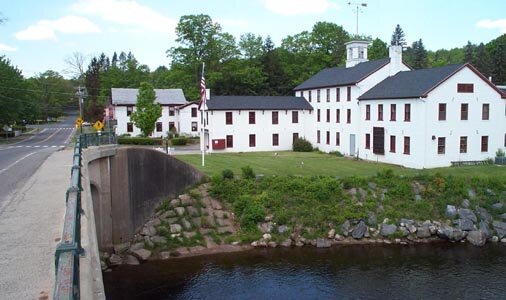
Lambert Hitchcock built this factory in 1825 and produced his famous Hitchcock "fancy" chairs here in Riverton, Connecticut. Actually there is some debate as to whether this is the original factory or one rebuilt in 1851 after a fire. The village was known as Hitchcocksville up until the 1860's. Legend says that in the heyday of chair production here, workers would drop the chairs out of upper story windows into the wagon below, and if the chair survived intact, it passed the quality control test! The mill was operated by water power from the Farmington River. Many other businesses occupied the factory after Hitchcock left. Over the years a variety of products were made here including carpenter planes, rulers, rubber nipples and lumber. In 1946 John Kenny bought the old factory and launched the second coming of Hitchcock Chair.
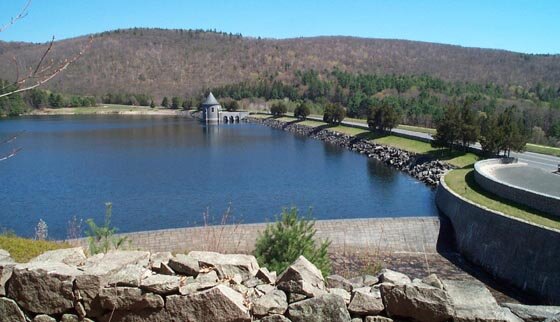
The Saville Dam was completed in 1940 on the East Branch of the Farmington River. It is named for the chief engineer of the project, Caleb Mills Saville. The Barkhamsted Reservoir is about 8 miles long and extends from central Barkhamsted north into the town of Hartland almost to Massachusetts. The Reservoir is the primary water supply for the metropolitan Hartford area, which is about 25 miles away. Many Barkhamsted farms, houses and the village of Barkhamsted Hollow were located in the area flooded by the Reservoir. This photo was taken in May 2000 and at the time, just a little water (barely visible) was coming over the spillway (the spillway is the long masonry structure behind the pine tree in the bottom center of the photo).
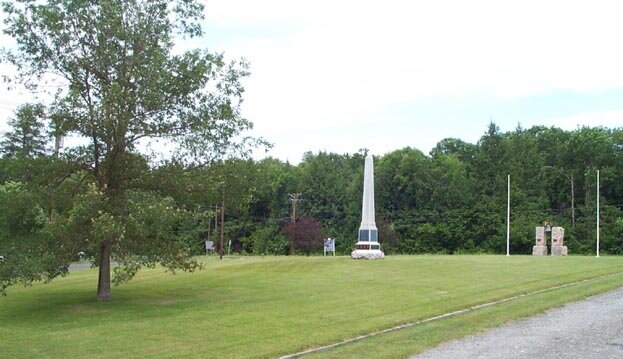
The large monument in the center of the photo above is the Soldiers Monument which was originally erected in 1897 at Barkhamsted Hollow. It was moved to this location at the Barkhamsted Center Cemetery green about 1939 when the Barkhamsted Reservoir was built. With a recent update, the names of Barkhamsted war veterans from the Revolution to Vietnam are listed. The stone structure at right holds the bell that formerly hung in the Universalist Church. The Church was also a victim of the Reservoir. Former residents of Barkhamsted Hollow remember climbing into the steeple of the Church and ringing the bell as a Halloween night prank.
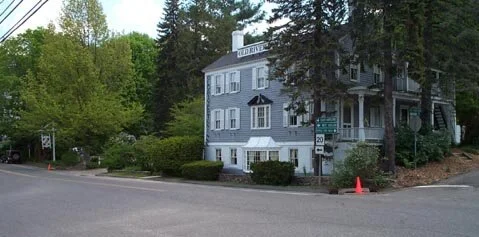
The Old Riverton Inn was built about 200 years ago (sources vary as to the exact year). It has been operating almost continuously ever since, and that covers a lot of time.
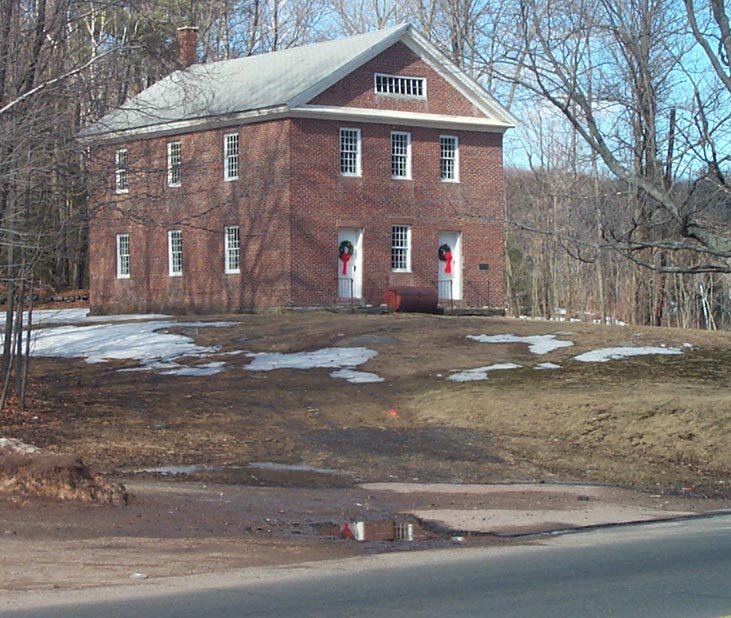
Located near the intersection of Routes 219 and 179 in the eastern part of town, the Church was built in 1834 with bricks from the nearby brickyard of Truman Case. During the early years here Simeon Case was the tithing man and was responsible for the good behavior of the congregation. If the boys whispered during the service, "he would take a hymn book and slam it down upon a seat back with the greatest of force right during the prayer". Services are still held here during the summer months and at Thanksgiving.
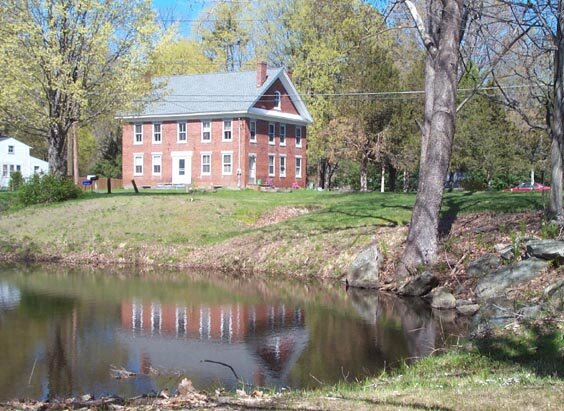
Located in Pleasant Valley near the bridge over the Farmington River, this brick building was built about 1840 and served as a hotel for many of its early years. Not one of the oldest houses in town, but don't you think it has a certain stately aspect? It is now (May 2000) a private residence

Arba Alford completed this house in 1833. Alford was a partner with Lambert Hitchcock in the chair business located across the street from the house. Hitchcock occupied one side of the house, which actually was a duplex- one side was the mirror image of the other side. Eunice Hitchcock wrote in her diary that they moved into the building in March 1833. Hitchcock occupied the apartment on the west side and lived here until he moved to Unionville in 1842. In 1838 the ell was added across the back. The ell provided additional room downstairs for Alford and Hitchcock and also an apartment upstairs for Alford s mother. In 1904 the Alford children sold the house to their cousin, Carlton Roberts. Mrs. Roberts was the Riverton postmaster from 1914 to 1922. She had a door put in to replace the window on the south side of what had been the Hitchcock living room and opened the partition between the two apartments, placing mail boxes in the opening (these were the first mail boxes used in Barkhamsted). The west room was used as the post office lobby and the east room to sort the mail. The house was sold to Laurence H. Roberts in 1925 and the Roberts family occupied the house into the 1970 s. In the 1980 s the house was purchased by the Hitchcock Chair Company and converted to a furniture showroom.
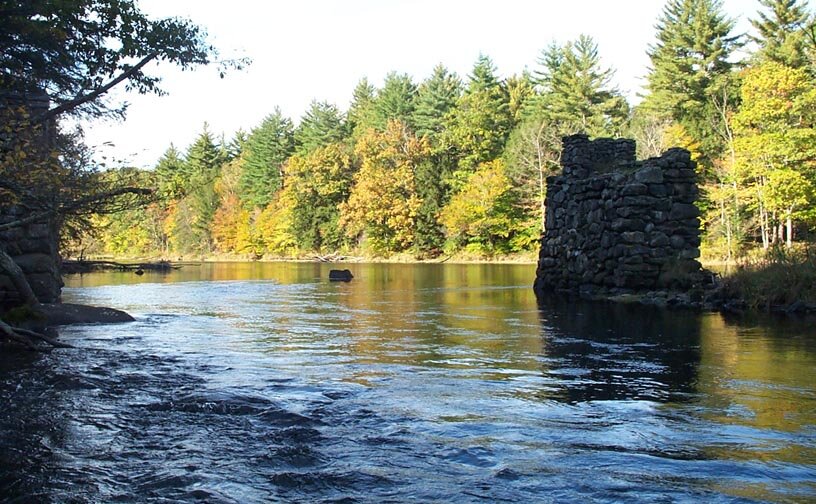
The Farmington River is an important element in the landscape and history of the town of Barkhamsted. The river s six-mile run from the Riverton area down to Pleasant Valley and on to New Hartford has supplied waterpower to 19th century mills and supplies abundant recreational opportunities to current residents and visitors to the town. In 1994 the entire course of the river in Barkhamsted was included in the 14-mile wild and scenic designation, part of the National Wild and Scenic River System. The stone abutment seen in the photo was part of a footbridge built across the river in the 1930 s by the CCC workers. It is sometimes forgotten that Barkhamsted actually has TWO Farmington Rivers. Besides the west branch described above, the east branch of the river is now held back by the Saville Dam to form the Barkhamsted Reservoir.
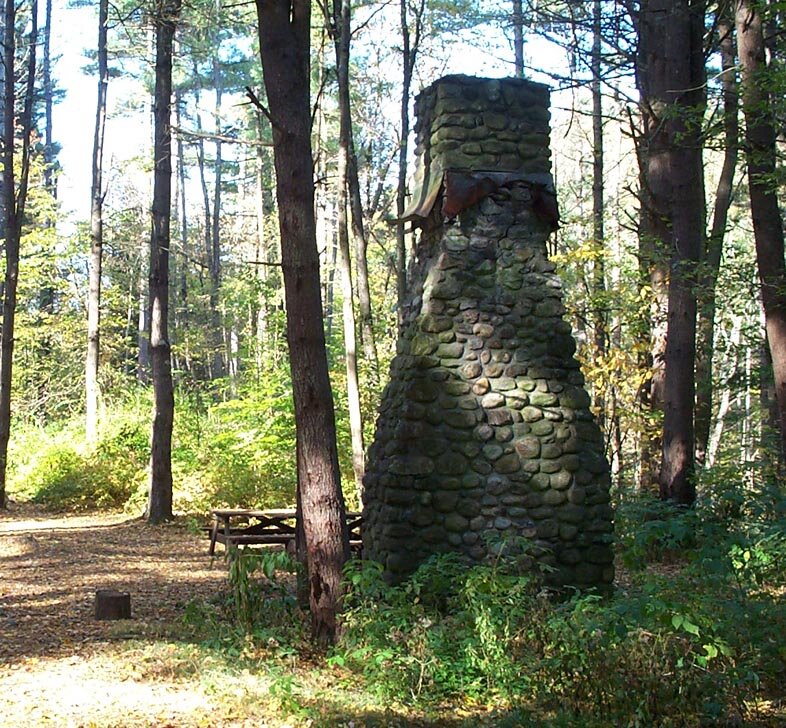
This stone chimney and a few other ruins among the trees are about all that is left of Camp White. Camp White was a Civilian Conservation Corps camp located in Barkhamsted between Pleasant Valley and Riverton in what is now American Legion State Forest. It operated from December 1933 to January 1942 as part of the Federal effort to keep workers employed on public works projects during the Depression. The camp covered about 7 acres and was comprised of five large barracks, a mess hall, washroom, officers quarters, headquarters/recreation hall and several support buildings. The CCC workers numbered from 200 to 250 during most years. Many of the CCC projects were improvements in the State Forest land in Barkhamsted, including the Stone Museum, forest roads, bridges and trails. In 1934 Camp White received the award for the most beautiful and well-kept CCC camp.
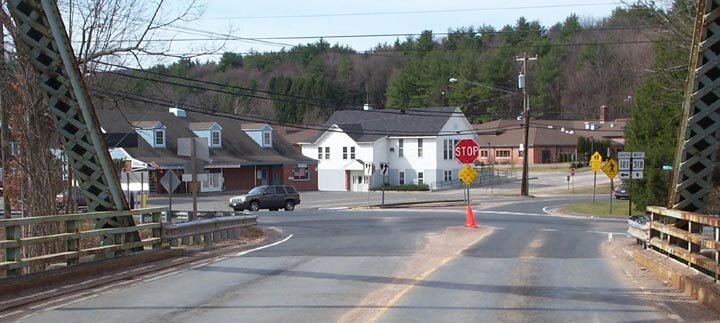
A view of Pleasant Valley taken from the bridge over the Farmington River. At left is the Pleasant Valley General Store. The white building is the Barkhamsted Town Hall and at right is a portion of the Barkhamsted Elementary School.